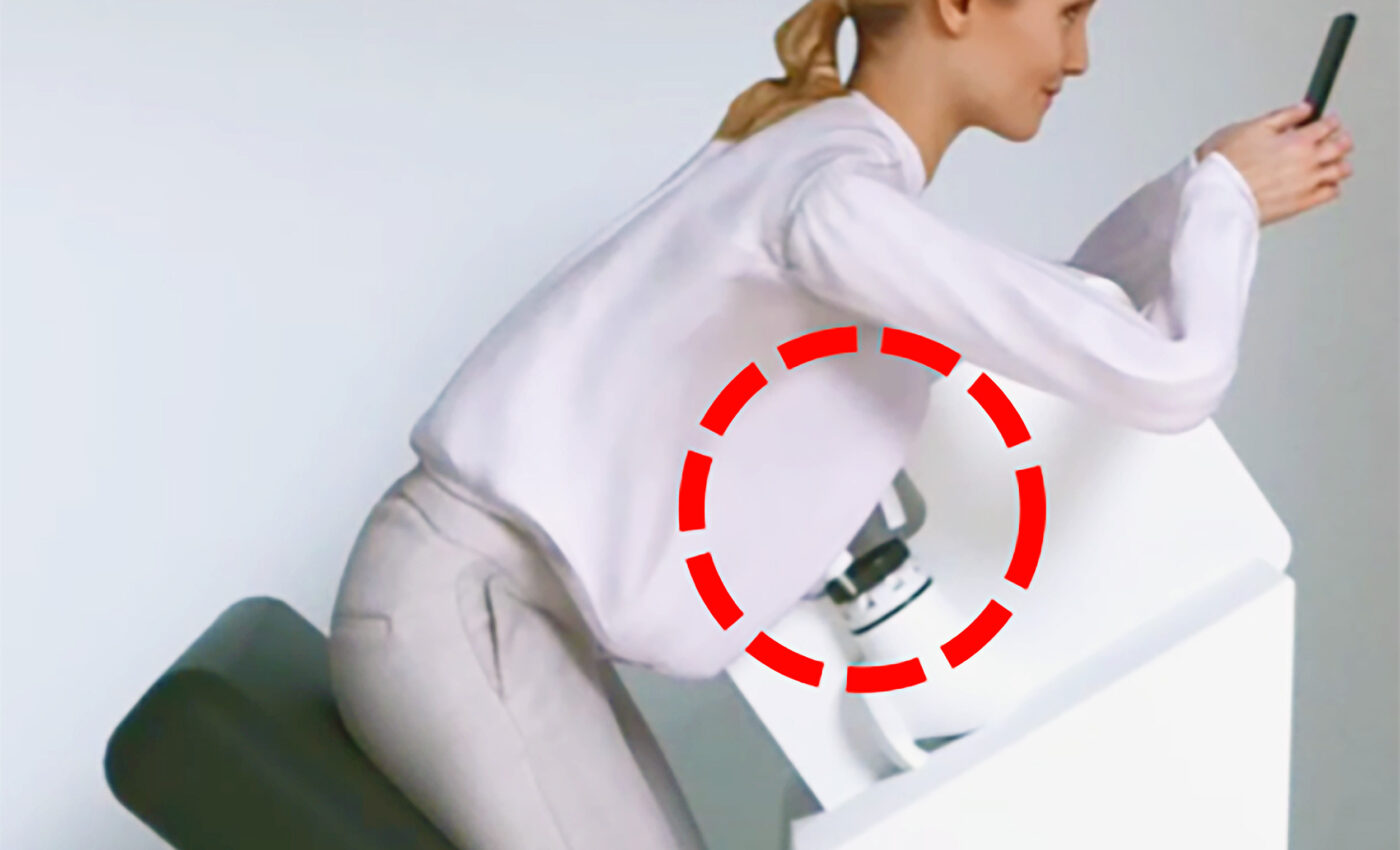
New robot could revolutionize breast cancer diagnosis
Researchers at the University of Bristol have unveiled a cutting-edge robot designed to conduct clinical breast examinations (CBE). The technology represents a significant stride toward improved monitoring ands early breast cancer diagnosis.
The manipulator
The robot, known as “the manipulator,” was developed at the Bristol Robotics Laboratory. The machine stands out for its ability to administer specific forces comparable to those applied by human examiners during breast exams (see image).
Notably, its advanced sensor technology is adept at identifying lumps at greater depths than previously possible.
Monitoring breast health
The introduction of this robotic device may ultimately transform women’s approach to monitoring their breast health.
It offers an innovative method for safe, electronic breast exams that can be strategically positioned in accessible locations like pharmacies and health centers.
The robot is the brainchild of a diverse team comprising both postgraduate and undergraduate researchers, all operating under the supervision of Dr. Antonia Tzemanaki from the Bristol Robotics Laboratory.
Effectiveness of breast exams
According to study lead author George Jenkinson, there’s a range of opinions regarding the effectiveness of clinical breast examinations.
“There are conflicting ideas about how useful carrying out clinical breast examinations are for the health outcomes of the population,” said Jenkinson. “It’s generally agreed upon that if it is well performed, then it can be a very useful and low risk diagnostic technique.
“There have been a few attempts in the past to use technology to improve the standard to which healthcare professionals can perform a CBE by having a robot or electronic device physically palpate breast tissue.”
“But the last decade or so of technological advances in manipulation and sensor technology mean that we are now in a better position to do this.”
“The first question that we want to answer as part of this is whether a specialized manipulator can be demonstrated to have the dexterity necessary to palpate a realistic breast size and shape.”
Creating the robot
The team’s manipulator prototype was created using 3D printing and computer numerical control techniques.
The development process incorporated a series of laboratory experiments and simulated trials, all conducted on a silicone breast and its digital twin.
Simulations and experiments
Through simulations, the researchers could execute thousands of palpations and evaluate numerous hypothetical scenarios. This included efficiency analysis while using varying numbers of sensors, ranging from two to four, concurrently.
Furthermore, the team conducted actual experiments on the silicone breast in the lab. This approach was crucial to validating the accuracy of the simulations and empirically determining the forces required by the real equipment.
Ultimately, the robot’s dexterity in palpating realistic breast sizes and shapes will be under scrutiny as the team progresses with their work.
Study implications
“We hope that the research can contribute to and complement the arsenal of techniques used to diagnose breast cancer, and to generate a large amount of data associated with it that may be useful in trying to identify large scale trends that could help diagnose breast cancer early,” said Jenkinson.
“One advantage that some doctors have mentioned anecdotally is that this could provide a low-risk way to objectively record health data. This could be used, for example, to compare successive examinations more easily, or as part of the information packet sent to a specialist if a patient is referred for further examination.”
“So far we have laid all of the groundwork,” said George. “We have shown that our robotic system has the dexterity necessary to carry out a clinical breast examination – we hope that in the future this could be a real help in diagnosing cancers early.”
This research was a part of project ARTEMIS, funded by Cancer Research UK and supported by EPSRC.
Image & Video Credit: George Jenkinson
Like what you read? Subscribe to our newsletter for engaging articles, exclusive content, and the latest updates.
—-
Check us out on EarthSnap, a free app brought to you by Eric Ralls and Earth.com.












